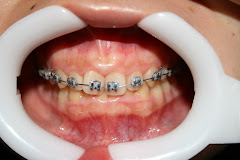"Unlock Your Best Smile: The Ultimate New Year's Resolution"
As we embark on a new year, many of us reflect on the changes we want to make to improve our lives. While resolutions often revolve around fitness, career, or personal growth, one aspect that is often overlooked is the power of a great smile. A beautiful, confident smile can have a profound impact on our overall well-being, and what better way to kick off the year than by prioritizing your oral health? In this blog post, we explore the importance of a stunning smile as a New Year's resolution and why getting your teeth straightened at an orthodontist might be the key to unlocking your best self. The Power of a Smile: A smile is more than just a facial expression; it's a universal language that transcends barriers and connects people. A confident smile can boost your mood, enhance your self-esteem, and even positively influence the way others perceive you. Research has shown that smiling triggers the release of endorphins, the body's natural feel-good chemicals, creating a r



